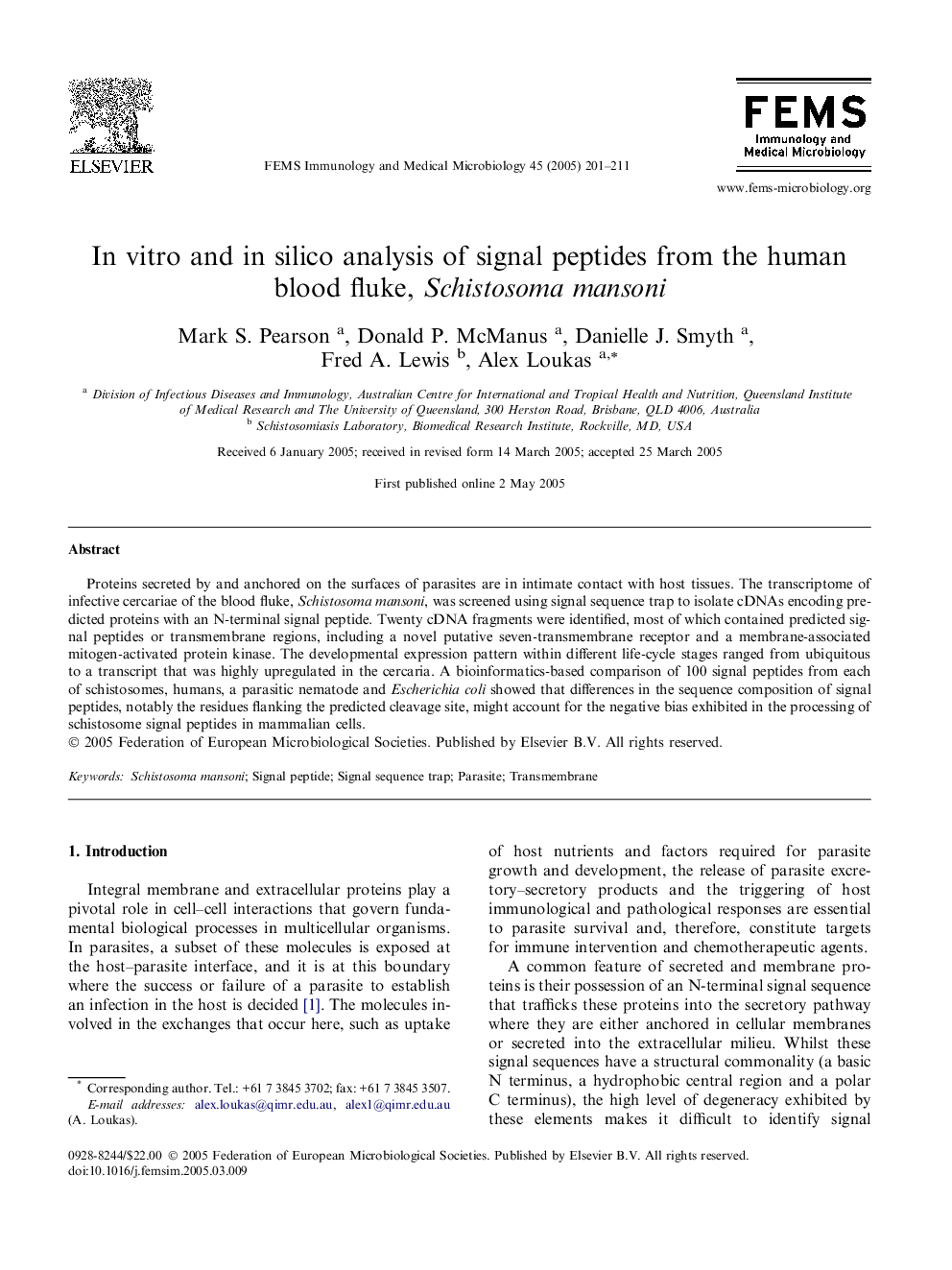| Article ID | Journal | Published Year | Pages | File Type |
|---|---|---|---|---|
| 9277980 | FEMS Immunology and Medical Microbiology | 2005 | 11 Pages |
Abstract
Proteins secreted by and anchored on the surfaces of parasites are in intimate contact with host tissues. The transcriptome of infective cercariae of the blood fluke, Schistosoma mansoni, was screened using signal sequence trap to isolate cDNAs encoding predicted proteins with an N-terminal signal peptide. Twenty cDNA fragments were identified, most of which contained predicted signal peptides or transmembrane regions, including a novel putative seven-transmembrane receptor and a membrane-associated mitogen-activated protein kinase. The developmental expression pattern within different life-cycle stages ranged from ubiquitous to a transcript that was highly upregulated in the cercaria. A bioinformatics-based comparison of 100 signal peptides from each of schistosomes, humans, a parasitic nematode and Escherichia coli showed that differences in the sequence composition of signal peptides, notably the residues flanking the predicted cleavage site, might account for the negative bias exhibited in the processing of schistosome signal peptides in mammalian cells.
Related Topics
Life Sciences
Immunology and Microbiology
Immunology
Authors
Mark S. Pearson, Donald P. McManus, Danielle J. Smyth, Fred A. Lewis, Alex Loukas,
